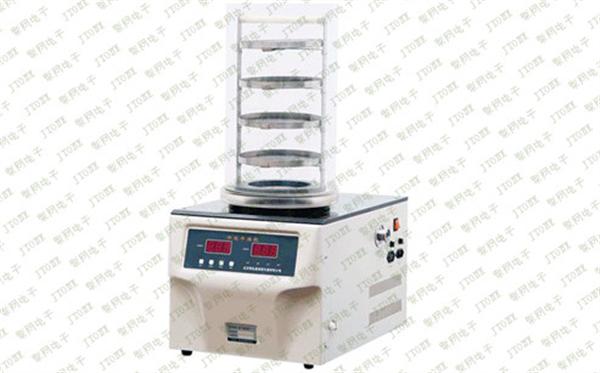Laboratory evaporation concentration method nitrogen blowing instrument, rotary evaporator, freeze dryer advantages and disadvantages
Nitrogen blowing principle: The nitrogen is quickly, continuously and controllably blown to the surface of the heated sample, so that the moisture in the sample to be treated is quickly evaporated and separated to achieve oxygen-free concentration of the sample.
It is mainly used for concentration or preparation of large-volume samples (such as drug screening, hormone analysis, liquid phase, and sample preparation in mass spectrometry). Through the microcomputer control technology, the high-purity aluminum material is used as the heating medium to achieve more accurate temperature control and wide temperature control range. The working principle is that by blowing nitrogen into the surface of the heated sample, the solvent in the sample is quickly evaporated and separated, thereby achieving the purpose of anaerobic concentration of the sample and keeping the sample more pure.
Application: pesticide residue analysis, drug screening, liquid phase, gas phase, mass spectrometry analysis.
advantage:
Fast drying speed disadvantages:
High sample temperature The low sample throughput has the risk of blowing substances into the laboratory. It must be operated in a fume hood. Nitrogen consumption is required. Additional costs are added. The flammable solvent has an explosion hazard. The entire process needs to be monitored.

Rotary evaporator
Principle: The basic principle is vacuum distillation, which can lower the boiling point of liquids. Those substances that are thermally decomposed, oxidized or polymerized without reaching the boiling point during atmospheric distillation can be distilled off before decomposition. "Rotation" can form solvent. The film increases the evaporation area. In addition, under the action of a high-efficiency cooler (generally a condenser), the hot steam can be quickly liquefied to accelerate the evaporation rate.
Application: Concentration of extract, extraction of organic matter, distillation of the separation of the receiving liquid.
Rotary evaporators are mainly used for concentration, crystallization, drying, separation and coal recovery in the pharmaceutical, chemical and biopharmaceutical industries. The principle is as follows: under vacuum condition, the constant temperature is heated to make the rotating bottle rotate at a constant speed, and the material forms a large-area film on the bottle wall and evaporates efficiently. The dissolved coal vapor is cooled by a high-efficiency glass condenser and recovered in a collecting bottle, thereby greatly improving the evaporation efficiency, and is particularly selected for the concentration and purification of biological products which are easily decomposed and degenerated by high temperature.
advantage:
Evaporation speed is relatively fast. Large sample volume control water bath temperature can control heat input vacuum degree can control the whole process visible, good control disadvantages:
Can only handle a single sample, need to clean the glass device. The seal has a limited life. It needs to be replaced regularly and it will leak into the air, causing pollution.

Laboratory evaporation concentration method nitrogen blowing instrument, rotary evaporator, freeze dryer advantages and disadvantages
Freeze dryer
Principle: The moisture in the pre-freezing sample is directly sublimated under vacuum, and the vaporized gas can be captured by the cold trap to make the evaporation process proceed rapidly.
Applications: Drying of temperature and oxygen sensitive biological samples by strains, vaccines, proteins, nucleic acids, drugs, etc., lyophilized samples are easy to store and transport.
A freeze dryer is a technical method of preliminarily freezing an aqueous article and then sublimating the water under vacuum to obtain a dried article. The freeze-dried articles are easy to store for a long time, and the vacuum freeze dryer can return to the state before lyophilization and maintain the original biochemical characteristics after adding water. It is widely used in pharmaceuticals, biological products, chemical and food industries. For thermosensitive substances such as antibiotics, vaccines, blood products, enzyme hormones and other biological products, freeze-drying technology can show its superiority.
advantage:
Safe moisture removal rate is very high, low vacuum, can accurately control the sample temperature is low, suitable for temperature sensitive samples can maintain sample properties, resolubility, shelf heating temperature can accurately control the disadvantages:
Slow speed, generally need guo night processing, higher purchase cost, sample needs to be frozen beforehand

Laboratory evaporation concentration method nitrogen blowing instrument, rotary evaporator, freeze dryer advantages and disadvantages
Insulation Tubes,Pvc Pipe Insulation,Insulated Pex Pipe,Rubber Insulation Tube
Shenzhen Huiyunhai Tech.Co., Ltd. , https://www.cablesleevefactory.com